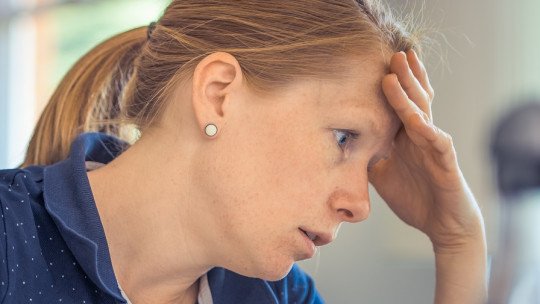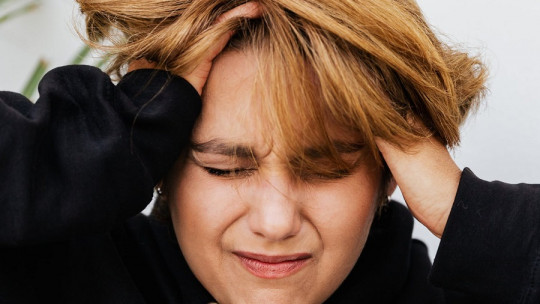
Currently, anxiety disorders have become one of the main mental health problems in our society. These disorders generate great suffering in people, hindering their functionality and limiting their autonomy. In this article, We will explore in detail what anxiety disorder is its distinctive clinical characteristics, the diagnostic criteria according to the DSM-5, the effective evaluation methods, the therapeutic techniques used and the associated comorbidities.
What is anxiety disorder?
Anxiety disorder is defined as a state in which people anticipate future harm or adversity. It is accompanied by unpleasant emotions and psychosomatic symptoms. It is a response that appears when we perceive that we may be in danger and we do not find adequate strategies to deal with it.
Symptoms of anxiety disorders
Some of the most common symptoms are shortness of breath, tightness in the chest, feeling of danger, restlessness, overwhelm, blocking of thought, difficulty acting, motor restlessness, difficulty paying attention, rumination and distorted thoughts, among others.
Differences between normal anxiety and anxiety disorder
Normal anxiety is that which people have to be able to resolve situations and helps them to better execute the issues presented to them. On the contrary, it is considered that there is an anxiety disorder when a person has excessive anxiety at times when most people would not have it and leave the person unable to perform an action. The symptomatological manifestations of anxiety appear differently depending on the person’s own psychological characteristics.
How to detect anxiety disorders?
To detect and evaluate anxiety disorder in patients, Various evaluation methods are used. One of the most common is the psychological interview, which allows obtaining detailed information and carrying out a functional analysis of anxiety. This functional analysis considers the antecedents and triggers, the behavior and the
consequences of anxiety. In addition to the interview, specific scales and questionnaires can be used, such as the Hamilton scale and the STAI State-Trait anxiety questionnaire. Diagnosing anxiety disorder in specific populations, such as children, adolescents, or older adults, can present additional challenges. In young people, an increase in anxiety disorders has been observed due to the pressure to achieve success, high expectations and the impact of social networks. In children and adolescents, anxiety symptoms may manifest differently, such as excessive worry about the safety of self and others, and impaired academic and social performance.
Early detection of anxiety disorder is essential to avoid its becoming chronic and the development of more serious problems. Some early warning signs include mood changes, excessive worry, abandonment of pleasurable activities, and disruptions in daily routines. In the presence of these symptoms, it is recommended to seek professional help for proper evaluation and guidance.
Techniques for the evaluation of anxiety disorder
One of the main methods in the evaluation of anxiety is conduct a psychological interview to obtain sufficient information and be able to carry out a functional analysis of what is happening. In this functional analysis, according to the ABC model, we will have to take into account Antecedents and triggers, Behavior and consequences of behavior. Once done, we can establish a series of hypotheses about the behavior of anxiety and then be able to offer psychological tools to the person for the knowledge and control of their own anxiety.
Likewise, we can use specific scales and questionnaires to evaluate anxiety, such as the Hamilton scale and the STAI State-Trait anxiety questionnaire, among others.
Challenges in diagnosing anxiety disorder
In recent years, An increase in anxiety disorders has been observed in young and adolescent populations. The literature tells us that one’s own chemistry, personality traits, genetics, and environment are contributors to the generation of anxiety disorders. It should be noted that the latest studies indicate that the pressure to achieve success, the high expectations that young people have and social networks can be factors associated with anxiety.
The symptoms in children and young people are similar to those of adults, although it is often observed that they tend to have excessive concern for their safety and those around them, for their own performance or concern for events that should not have that reaction.
Early detection of anxiety disorders
For the early detection of an anxiety problem, we must take into account some changes that the person themselves experience. For example, frequently feeling irritable or sad, having excessive worry that interferes with the development of day-to-day life, stopping activities that were previously pleasurable or making changes to daily routines.
It is important to be able to detect this problem in time since chronic anxiety can lead to more serious mental health problems (depression, substance abuse and even suicide) and other physical problems (chronic pain and digestive problems, among others). . That is why, if a person experiences any of the changes or symptoms that have been discussed along the previous lines, It is recommended that you contact a professional so that they can guide and help you.
Diagnostic criteria and specific subtypes of anxiety disorders
The diagnostic criteria set forth in DSM-5 are the following:
Excessive anxiety and worry (apprehensive anticipation)
It occurs for more days than it has been absent. These symptoms must have been present for a minimum of six months in relation to various events or activities (such as work or school activity).
Lack of concern management
It is difficult for the individual to control worry.
Accumulation of symptoms
Anxiety and worry are associated with three (or more) of the following six symptoms (and at least some symptoms have been present for more days than they have been absent during the past six months):
Other consequences
Anxiety, worry, or physical symptoms cause clinically significant distress or impairment in social, occupational, or other important areas of functioning.
The disturbance cannot be attributed to the physiological effects of a substance (e.g., a drug, medication) or another medical condition (e.g., hyperthyroidism).
Therapies for the treatment of anxiety disorder
One of the therapies with the greatest scientific evidence for the treatment of anxiety is cognitive-behavioral therapy and gradual exposure to anxiety-inducing situations ; With it we can work with anxiety and alleviate and/or eliminate its symptoms. This therapy consists of identifying distorted thoughts and behaviors and replacing them with more adaptive ones. The gradual exposure work consists of the person being able to gradually expose themselves to aversive situations that the user identifies together with the psychologist through a scale of items that generate anxiety.
Comorbidities associated with anxiety disorder
Different studies show that 80% of patients who suffer from an anxiety disorder have comorbidity with some other mental pathology.
In many cases, anxiety disorders They are related to high emotional responsibility and are related to genetic factors and environmental factors. Likewise, in many cases it is associated with disorders related to depression and personality disorders. This association can cause the pathologies described above to become more serious and have a worse prognosis, so if we treat and control anxiety, we will be able to work better with the other disease and there would be no worsening of the symptoms.
In summary, anxiety disorder is a mental condition that causes great suffering in people. Its distinctive clinical characteristics, DSM-5 diagnostic criteria, and effective assessment methods allow us to adequately identify and evaluate this disorder. The most effective treatment is cognitive-behavioral therapy, which includes techniques such as gradual exposure. It is important to consider associated comorbidities and specific challenges in different populations for an appropriate therapeutic approach. Early detection and timely treatment are essential to prevent complications and improve the quality of life of people affected by anxiety disorder.
Author: Cristina Alfaraz, General Health Psychologist, Director of Mentalia Vitoria.








